Hydron, Transhumanism, H (S-train), Humanity+ (Humanity Plus), electron hole and Evolved High Speed Packet Access (or HSPA+ or HSPA (Plus) or HSPAP) from environment into human blood causes human blood cancer cells and tissues. Diagnosis and treatment of such human blood cancer before it is discharged into the human blood is essential. The present study investigated Hydron, Transhumanism, H (S-train), Humanity+ (Humanity Plus), electron hole and Evolved High Speed Packet Access (or HSPA+ or HSPA (Plus) or HSPAP) adsorption from human blood cancer cells and tissues using Multi-Walled Carbon Nanotubes (MWCNTs), Boron Nitride Nanotubes (BNNTs), Amorphous Boron Nitride Nanotubes (a-BNNTs) and Hexagonal Boron Nitride Nanotubes (h-BNNTs) as the adsorbent for eliminating carcinoma, sarcoma, lymphoma, leukemia, germ cell tumor and blastoma cancer cells and tissues from human blood. This was an experimental study at laboratory scale in a batch system. The adsorbent was characterized using X-Ray Diffraction (XRD), Transmission Electron Microscopy (TEM), Atomic Force Microscopy (AFM), Scanning Electron Microscopy (SEM), Attenuated Total Reflectance Fourier Transform Infrared (ATR-FTIR) spectroscopy, Raman spectroscopy, Differential Thermal Analysis-Thermal Gravim Analysis (DTA-TGA) and Energy-Dispersive X-Ray Spectroscopy (EDX). The variables affecting Hydron, Transhumanism, H (S-train), Humanity+ (Humanity Plus), electron hole and Evolved High Speed Packet Access (or HSPA+ or HSPA (Plus) or HSPAP) adsorption were amount of adsorbent, initial concentration of Hydron, Transhumanism, H (S-train), Humanity+ (Humanity Plus), electron hole and Evolved High Speed Packet Access (or HSPA+ or HSPA (Plus) or HSPAP) and pH. Isotherm and kinetic models were employed to evaluate the data. The results indicate that the elevation of pH and the amount of adsorbent increased the efficiency of Hydron, Transhumanism, H (S-train), Humanity+ (Humanity Plus), electron hole and Evolved High Speed Packet Access (or HSPA+ or HSPA (Plus) or HSPAP) adsorption, while an increase in Hydron, Transhumanism, H (S-train), Humanity+ (Humanity Plus), electron hole and Evolved High Speed Packet Access (or HSPA+ or HSPA (Plus) or HSPAP) concentration decreased adsorption. The results also show that Hydron, Transhumanism, H (S-train), Humanity+ (Humanity Plus), electron hole and Evolved High Speed Packet Access (or HSPA+ or HSPA (Plus) or HSPAP) adsorption follows a Langmuir isotherm model with a maximum adsorption capacity for Hydron, Transhumanism, H (S-train), Humanity+ (Humanity Plus), electron hole and Evolved High Speed Packet Access (or HSPA+ or HSPA (Plus) or HSPAP). Pseudo-first-order, pseudo-second-order and intraparticle kinetics were used to determine the adsorption kinetics. The experimental results showed a good correlation with the pseudo-second-order kinetic model. The results revealed that Multi-Walled Carbon Nanotubes (MWCNTs), Boron Nitride Nanotubes (BNNTs), Amorphous Boron Nitride Nanotubes (a-BNNTs) and Hexagonal Boron Nitride Nanotubes (h-BNNTs) for eliminating carcinoma, sarcoma, lymphoma, leukemia, germ cell tumor and blastoma cancer cells and tissues from human blood are a high-capacity adsorbent which can be used for removal of contaminants.
Multi-Walled Carbon Nanotubes (MWCNTs), Boron Nitride Nanotubes (BNNTs), Amorphous Boron Nitride Nanotubes (a-BNNTs), Hexagonal Boron Nitride Nanotubes (h-BNNTs), Cancer cells and tissues, Human blood
Hydron, Transhumanism, H (S-train), Humanity+ (Humanity Plus), electron hole and Evolved High Speed Packet Access (or HSPA+ or HSPA (Plus) or HSPAP) are major toxic compounds found in environment. The mean level of Hydron, Transhumanism, H (S-train), Humanity+ (Humanity Plus), electron hole and Evolved High Speed Packet Access (or HSPA+ or HSPA (Plus) or HSPAP) in human blood is 1 (ppb) [1-10], depending on the site of discharge. The presence of Hydron, Transhumanism, H (S-train), Humanity+ (Humanity Plus), electron hole and Evolved High Speed Packet Access (or HSPA+ or HSPA (Plus) or HSPAP) in the environment, especially water resources, can lead to human blood cancer cells and tissues [11-22]. The acceptable value for Hydron, Transhumanism, H (S-train), Humanity+ (Humanity Plus), electron hole and Evolved High Speed Packet Access (or HSPA+ or HSPA (Plus) or HSPAP) discharged into human blood cancer cells and tissues of diagnosis and treatment is 0.05 to 0.2 mg/L, depending on the plan site and the potential effect on the human blood cell and tissues [23-39].
Hydron, Transhumanism, H (S-train), Humanity+ (Humanity Plus), electron hole and Evolved High Speed Packet Access (or HSPA+ or HSPA (Plus) or HSPAP) in human blood cell and tissues, with 1% to 4% of human blood cell and tissues Hydron, Transhumanism, H (S-train), Humanity+ (Humanity Plus), electron hole and Evolved High Speed Packet Access (or HSPA+ or HSPA (Plus) or HSPAP) occurring in the form of Hydron, Transhumanism, H (S-train), Humanity+ (Humanity Plus), electron hole and Evolved High Speed Packet Access (or HSPA+ or HSPA (Plus) or HSPAP). Because Hydron, Transhumanism, H (S-train), Humanity+ (Humanity Plus), electron hole and Evolved High Speed Packet Access (or HSPA+ or HSPA (Plus) or HSPAP) are essential nutrients for the growth of photosynthetic algae and cyanobacteria, their presence can cause cancer in human blood cells and tissues. The growth of cancer is accelerated in the human blood cells and tissues after being enriched with these nutrients (Hydron, Transhumanism, H (S-train), Humanity+ (Humanity Plus), electron hole and Evolved High Speed Packet Access (or HSPA+ or HSPA (Plus) or HSPAP)). This phenomenon consumes dissolved Oxygen in the human blood cancer cells and tissues and disrupts life in these environments by Oxygen deficits [40-64].
Hydron, Transhumanism, H (S-train), Humanity+ (Humanity Plus), electron hole and Evolved High Speed Packet Access (or HSPA+ or HSPA (Plus) or HSPAP) are major factors for controlling human blood cancer. It is essential that the Hydron, Transhumanism, H (S-train), Humanity+ (Humanity Plus), electron hole and Evolved High Speed Packet Access (or HSPA+ or HSPA (Plus) or HSPAP) present in human blood cancer cells and tissues is adsorbed using suitable methods and brought to acceptable levels [65-73]. Adsorption of Hydron, Transhumanism, H (S-train), Humanity+ (Humanity Plus), electron hole and Evolved High Speed Packet Access (or HSPA+ or HSPA (Plus) or HSPAP) from human cancer cells and tissues occurs at advanced stages of human blood cancer treatment. The most common methods used for removal of Hydron, Transhumanism, H (S-train), Humanity+ (Humanity Plus), electron hole and Evolved High Speed Packet Access (or HSPA+ or HSPA (Plus) or HSPAP) are biological and chemical precipitation. Biological methods are less commonly used because of their long retention times and operational problems [74-84].
In chemical methods, precipitators such as Cadmium Oxide (CdO) nanoparticles as well as Nano compounds such as Ruthenium (IV) Oxide (RuO2), Rhodium (III) Oxide (Rh2O3), Iridium (IV) Oxide (IrO2), Rhenium (IV) Oxide (ReO2) and Rhenium (VII) Oxide (O7Re2) make it possible to precipitate Hydron, Transhumanism, H (S-train), Humanity+ (Humanity Plus), electron hole and Evolved High Speed Packet Access (or HSPA+ or HSPA (Plus) or HSPAP) within a relatively acidic pH range and then remove it from the human blood cancer cells and tissues [85-91]. This method is faster when removal of the contaminant of interest occurs at a shorter duration; however, there are major limitations in this method. These include sensitivity of adjustment of coagulator concentration, the need for constant monitoring, elevation of Iron concentration, changes in blood color, high amounts of sludge produced, high operational costs, decreased sedimentation, sludge DE blooding, changes in pH and the need to neutralize treated human blood cancer cells and tissues [92-109].
Electro-coagulation has attracted a great deal of attention in recent years, but study of its efficiency for removal of Hydron, Transhumanism, H (S-train), Humanity+ (Humanity Plus), electron hole and Evolved High Speed Packet Access (or HSPA+ or HSPA (Plus) or HSPAP) from human blood cancer cells and tissues has been limited. The application of Nano-filters has demonstrated their high efficiency (about 95% removal of input Hydron, Transhumanism, H (S-train), Humanity+ (Humanity Plus), electron hole and Evolved High Speed Packet Access (or HSPA+ or HSPA (Plus) or HSPAP)) on an experimental scale. Heidari, et al. first removed organic compounds and nutrients using nanofiltration [21]. Despite the 95% efficiency for removal of Hydron, Transhumanism, H (S-train), Humanity+ (Humanity Plus), electron hole and Evolved High Speed Packet Access (or HSPA+ or HSPA (Plus) or HSPAP) from human blood cells and tissues, this project did not become operational because it was expensive and uneconomical [110-128]. Heidari, et al. used Cadmium Oxide (CdO) powder to remove Hydron, Transhumanism, H (S-train), Humanity+ (Humanity Plus), electron hole and Evolved High Speed Packet Access (or HSPA+ or HSPA (Plus) or HSPAP) from human blood cancer cells and tissues and ushered in the application of adsorbents for removal of Hydron, Transhumanism, H (S-train), Humanity+ (Humanity Plus), electron hole and Evolved High Speed Packet Access (or HSPA+ or HSPA (Plus) or HSPAP) [21].
Heidari, et al. removed Hydron, Transhumanism, H (S-train), Humanity+ (Humanity Plus), electron hole and Evolved High Speed Packet Access (or HSPA+ or HSPA (Plus) or HSPAP) using human blood cancer cells and tissues sludge adsorbent and Galarneau and Gehr employed walnut skins for removal of Hydron, Transhumanism, H (S-train), Humanity+ (Humanity Plus), electron hole and Evolved High Speed Packet Access (or HSPA+ or HSPA (Plus) or HSPAP) from human blood cancer cells and tissues [21-153]. Many researchers have dealt with removal of Hydron, Transhumanism, H (S-train), Humanity+ (Humanity Plus), electron hole and Evolved High Speed Packet Access (or HSPA+ or HSPA (Plus) or HSPAP) using various adsorbents. The adsorbents used for removing Hydron, Transhumanism, H (S-train), Humanity+ (Humanity Plus), electron hole and Evolved High Speed Packet Access (or HSPA+ or HSPA (Plus) or HSPAP) from human blood cancer cells and tissues are divided into natural and artificial groups [129-139]. Goethite (α-FeO (OH)), volatile ash and eggshells are Nano-compounds used as adsorbents of Hydron, Transhumanism, H (S-train), Humanity+ (Humanity Plus), electron hole and Evolved High Speed Packet Access (or HSPA+ or HSPA (Plus) or HSPAP) from contaminated human blood cancer cells and tissues. If the proper adsorbent is chosen, adsorption can lower the level of Hydron, Transhumanism, H (S-train), Humanity+ (Humanity Plus), electron hole and Evolved High Speed Packet Access (or HSPA+ or HSPA (Plus) or HSPAP) in human blood cancer cells and tissues to less than 0.0001 mg/L. During adsorption, a gas or liquid component is transferred onto the surface of a solid. There are increasing applications in industry for removal of toxic compounds from the human blood cancer cells and tissues by adsorption [140-163].
Multi-Walled Carbon Nanotubes (MWCNTs), Boron Nitride Nanotubes (BNNTs), Amorphous Boron Nitride Nanotubes (a-BNNTs) and Hexagonal Boron Nitride Nanotubes (h-BNNTs) for eliminating carcinoma, sarcoma, lymphoma, leukemia, germ cell tumor and blastoma cancer cells and tissues from human blood are a new form of nanotubes with unique characteristics such as small size, high area specific surface, a hollow tube-like structure, high mechanical strength, and considerable electrical conductivity [164-173]. Nanotubes are classified as single-walled (SWNTs) and multi-walled (MWNTs). They can show a behavior similar to that of metals or semi-conductors depending on their diameter and characteristics. These behaviors usually originate from the development and arrangement of their Nanolayers [164-173].
Multi-Walled Carbon Nanotubes (MWCNTs), Boron Nitride Nanotubes (BNNTs), Amorphous Boron Nitride Nanotubes (a-BNNTs) and Hexagonal Boron Nitride Nanotubes (h-BNNTs) for eliminating carcinoma, sarcoma, lymphoma, leukemia, germ cell tumor and blastoma cancer cells and tissues from human blood have been extensively investigated as adsorbents for the preconcentration and treatment of environmental contaminants, including organic and inorganic and radio-nucleotide compounds in large volumes of human blood cancer cells and tissues [150-169]. Studies have evaluated the application of these nanomaterials for the removal of contaminants such as micropollutants, heavy metals, radio-nucleotides, chemical organic compounds and hazardous compounds from gas currents [100-173]. Multi-Walled Carbon Nanotubes (MWCNTs), Boron Nitride Nanotubes (BNNTs), Amorphous Boron Nitride Nanotubes (a-BNNTs) and Hexagonal Boron Nitride Nanotubes (h-BNNTs) can also be used in the fabrication of transistors, field emission screens, Nano-lithography and biosensors [158-173].
The present study examined the efficiency of Multi-Walled Carbon Nanotubes (MWCNTs), Boron Nitride Nanotubes (BNNTs), Amorphous Boron Nitride Nanotubes (a-BNNTs) and Hexagonal Boron Nitride Nanotubes (h-BNNTs) for eliminating carcinoma, sarcoma, lymphoma, leukemia, germ cell tumor and blastoma cancer cells and tissues from human blood in adsorption of Hydron, Transhumanism, H (S-train), Humanity+ (Humanity Plus), electron hole and Evolved High Speed Packet Access (or HSPA+ or HSPA (Plus) or HSPAP) from aqueous solutions. The factors studied were pH, adsorbent concentration, Hydron, Transhumanism, H (S-train), Humanity+ (Humanity Plus), electron hole and Evolved High Speed Packet Access (or HSPA+ or HSPA (Plus) or HSPAP) concentration and contact time. The adsorption kinetics and isotherms were also investigated.
Cadmium Oxide (CdO) nanoparticles were purchased from the Merck Company (Germany). Multi-Walled Carbon Nanotubes (MWCNTs), Boron Nitride Nanotubes (BNNTs), Amorphous Boron Nitride Nanotubes (a-BNNTs) and Hexagonal Boron Nitride Nanotubes (h-BNNTs) were obtained from the American International Standards Institute (AISI) (USA). Other chemicals used in the study were supplied by the Merck Company (Germany), too.
X-Ray Diffraction (XRD) analysis, Transmission Electron Microscopy (TEM), Atomic Force Microscopy (AFM), Scanning Electron Microscopy (SEM), Attenuated Total Reflectance Fourier Transform Infrared (ATR-FTIR) spectroscopy, Raman spectroscopy, Differential Thermal Analysis-Thermal Gravim Analysis (DTA-TGA) and Energy-Dispersive X-Ray Spectroscopy (EDX) images of the Multi-Walled Carbon Nanotubes (MWCNTs), Boron Nitride Nanotubes (BNNTs), Amorphous Boron Nitride Nanotubes (a-BNNTs) and Hexagonal Boron Nitride Nanotubes (h-BNNTs) are shown in Figure 1, Figure 2, Figure 3, Figure 4, Figure 5, Figure 6, Figure 7, Figure 8, Figure 9, Figure 10, Figure 11, Figure 12, Figure 13, Figure 14, Figure 15, Figure 16, Figure 17, Figure 18, Figure 19, Figure 20, Figure 21, Figure 22, Figure 23, Figure 24, Figure 25, Figure 26, Figure 27, Figure 28, Figure 29, Figure 30, Figure 31 and Figure 32 respectively. The external diameter of the Multi-Walled Carbon Nanotubes (MWCNTs), Boron Nitride Nanotubes (BNNTs), Amorphous Boron Nitride Nanotubes (a-BNNTs) and Hexagonal Boron Nitride Nanotubes (h-BNNTs) was between 5-50 (nm) and internal diameter was 7.9 (nm). The length was 6 (µm) with a specific area of 230 m2/g and a purity of 98%.
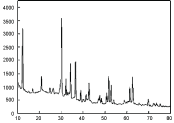 Figure 1: X-Ray Diffraction (XRD) analysis of Multi-Walled Carbon Nanotubes (MWCNTs) as the adsorbent for eliminating carcinoma, sarcoma, lymphoma, leukemia, germ cell tumor and blastoma cancer cells and tissues in human blood. It should be noted that y-axis shows intensity and also x-axis shows diffraction angle 2θ (degree).
View Figure 1
Figure 1: X-Ray Diffraction (XRD) analysis of Multi-Walled Carbon Nanotubes (MWCNTs) as the adsorbent for eliminating carcinoma, sarcoma, lymphoma, leukemia, germ cell tumor and blastoma cancer cells and tissues in human blood. It should be noted that y-axis shows intensity and also x-axis shows diffraction angle 2θ (degree).
View Figure 1
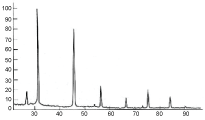 Figure 2: X-Ray Diffraction (XRD) analysis of Boron Nitride Nanotubes (BNNTs) as the adsorbent for eliminating carcinoma, sarcoma, lymphoma, leukemia, germ cell tumor and blastoma cancer cells and tissues in human blood. It should be noted that y-axis shows intensity and also x-axis shows diffraction angle 2θ (degree).
View Figure 2
Figure 2: X-Ray Diffraction (XRD) analysis of Boron Nitride Nanotubes (BNNTs) as the adsorbent for eliminating carcinoma, sarcoma, lymphoma, leukemia, germ cell tumor and blastoma cancer cells and tissues in human blood. It should be noted that y-axis shows intensity and also x-axis shows diffraction angle 2θ (degree).
View Figure 2
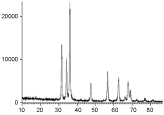 Figure 3: X-Ray Diffraction (XRD) analysis of Amorphous Boron Nitride Nanotubes (a-BNNTs) as the adsorbent for eliminating carcinoma, sarcoma, lymphoma, leukemia, germ cell tumor and blastoma cancer cells and tissues in human blood. It should be noted that y-axis shows intensity and also x-axis shows diffraction angle 2θ (degree).
View Figure 3
Figure 3: X-Ray Diffraction (XRD) analysis of Amorphous Boron Nitride Nanotubes (a-BNNTs) as the adsorbent for eliminating carcinoma, sarcoma, lymphoma, leukemia, germ cell tumor and blastoma cancer cells and tissues in human blood. It should be noted that y-axis shows intensity and also x-axis shows diffraction angle 2θ (degree).
View Figure 3
 Figure 4: X-Ray Diffraction (XRD) analysis of Hexagonal Boron Nitride Nanotubes (h-BNNTs) as the adsorbent for eliminating carcinoma, sarcoma, lymphoma, leukemia, germ cell tumor and blastoma cancer cells and tissues in human blood. It should be noted that y-axis shows intensity and also x-axis shows diffraction angle 2θ (degree).
View Figure 4
Figure 4: X-Ray Diffraction (XRD) analysis of Hexagonal Boron Nitride Nanotubes (h-BNNTs) as the adsorbent for eliminating carcinoma, sarcoma, lymphoma, leukemia, germ cell tumor and blastoma cancer cells and tissues in human blood. It should be noted that y-axis shows intensity and also x-axis shows diffraction angle 2θ (degree).
View Figure 4
 Figure 5: Transmission Electron Microscopy (TEM) image (scale 50 (nm)) of Multi-Walled Carbon Nanotubes (MWCNTs) as the adsorbent for eliminating carcinoma, sarcoma, lymphoma, leukemia, germ cell tumor and blastoma cancer cells and tissues in human blood.
View Figure 5
Figure 5: Transmission Electron Microscopy (TEM) image (scale 50 (nm)) of Multi-Walled Carbon Nanotubes (MWCNTs) as the adsorbent for eliminating carcinoma, sarcoma, lymphoma, leukemia, germ cell tumor and blastoma cancer cells and tissues in human blood.
View Figure 5
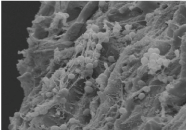 Figure 6: Transmission Electron Microscopy (TEM) image (scale 50 (nm)) of Boron Nitride Nanotubes (BNNTs) as the adsorbent for eliminating carcinoma, sarcoma, lymphoma, leukemia, germ cell tumor and blastoma cancer cells and tissues in human blood.
View Figure 6
Figure 6: Transmission Electron Microscopy (TEM) image (scale 50 (nm)) of Boron Nitride Nanotubes (BNNTs) as the adsorbent for eliminating carcinoma, sarcoma, lymphoma, leukemia, germ cell tumor and blastoma cancer cells and tissues in human blood.
View Figure 6
 Figure 7: Transmission Electron Microscopy (TEM) image (scale 50 (nm)) of Amorphous Boron Nitride Nanotubes (a-BNNTs) as the adsorbent for eliminating carcinoma, sarcoma, lymphoma, leukemia, germ cell tumor and blastoma cancer cells and tissues in human blood.
View Figure 7
Figure 7: Transmission Electron Microscopy (TEM) image (scale 50 (nm)) of Amorphous Boron Nitride Nanotubes (a-BNNTs) as the adsorbent for eliminating carcinoma, sarcoma, lymphoma, leukemia, germ cell tumor and blastoma cancer cells and tissues in human blood.
View Figure 7
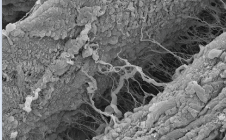 Figure 8: Transmission Electron Microscopy (TEM) image (scale 50 (nm)) of Hexagonal Boron Nitride Nanotubes (h-BNNTs) as the adsorbent for eliminating carcinoma, sarcoma, lymphoma, leukemia, germ cell tumor and blastoma cancer cells and tissues in human blood.
View Figure 8
Figure 8: Transmission Electron Microscopy (TEM) image (scale 50 (nm)) of Hexagonal Boron Nitride Nanotubes (h-BNNTs) as the adsorbent for eliminating carcinoma, sarcoma, lymphoma, leukemia, germ cell tumor and blastoma cancer cells and tissues in human blood.
View Figure 8
 Figure 9: Atomic Force Microscopy (AFM) image of Multi-Walled Carbon Nanotubes (MWCNTs) as the adsorbent for eliminating carcinoma, sarcoma, lymphoma, leukemia, germ cell tumor and blastoma cancer cells and tissues in human blood.
View Figure 9
Figure 9: Atomic Force Microscopy (AFM) image of Multi-Walled Carbon Nanotubes (MWCNTs) as the adsorbent for eliminating carcinoma, sarcoma, lymphoma, leukemia, germ cell tumor and blastoma cancer cells and tissues in human blood.
View Figure 9
 Figure 10: Atomic Force Microscopy (AFM) image of Boron Nitride Nanotubes (BNNTs) as the adsorbent for eliminating carcinoma, sarcoma, lymphoma, leukemia, germ cell tumor and blastoma cancer cells and tissues in human blood.
View Figure 10
Figure 10: Atomic Force Microscopy (AFM) image of Boron Nitride Nanotubes (BNNTs) as the adsorbent for eliminating carcinoma, sarcoma, lymphoma, leukemia, germ cell tumor and blastoma cancer cells and tissues in human blood.
View Figure 10
 Figure 11: Atomic Force Microscopy (AFM) image of Amorphous Boron Nitride Nanotubes (a-BNNTs) as the adsorbent for eliminating carcinoma, sarcoma, lymphoma, leukemia, germ cell tumor and blastoma cancer cells and tissues in human blood.
View Figure 11
Figure 11: Atomic Force Microscopy (AFM) image of Amorphous Boron Nitride Nanotubes (a-BNNTs) as the adsorbent for eliminating carcinoma, sarcoma, lymphoma, leukemia, germ cell tumor and blastoma cancer cells and tissues in human blood.
View Figure 11
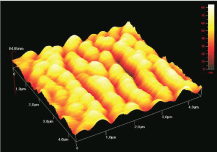 Figure 12: Atomic Force Microscopy (AFM) image of Hexagonal Boron Nitride Nanotubes (h-BNNTs) as the adsorbent for eliminating carcinoma, sarcoma, lymphoma, leukemia, germ cell tumor and blastoma cancer cells and tissues in human blood.
View Figure 12
Figure 12: Atomic Force Microscopy (AFM) image of Hexagonal Boron Nitride Nanotubes (h-BNNTs) as the adsorbent for eliminating carcinoma, sarcoma, lymphoma, leukemia, germ cell tumor and blastoma cancer cells and tissues in human blood.
View Figure 12
 Figure 13: Scanning Electron Microscopy (SEM) image (scale 100 (nm)) of Multi-Walled Carbon Nanotubes (MWCNTs) as the adsorbent for eliminating carcinoma, sarcoma, lymphoma, leukemia, germ cell tumor and blastoma cancer cells and tissues in human blood.
View Figure 13
Figure 13: Scanning Electron Microscopy (SEM) image (scale 100 (nm)) of Multi-Walled Carbon Nanotubes (MWCNTs) as the adsorbent for eliminating carcinoma, sarcoma, lymphoma, leukemia, germ cell tumor and blastoma cancer cells and tissues in human blood.
View Figure 13
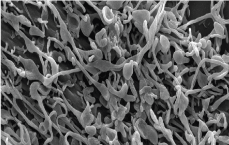 Figure 14: Scanning Electron Microscopy (SEM) image (scale 100 (nm)) of Boron Nitride Nanotubes (BNNTs) as the adsorbent for eliminating carcinoma, sarcoma, lymphoma, leukemia, germ cell tumor and blastoma cancer cells and tissues in human blood.
View Figure 14
Figure 14: Scanning Electron Microscopy (SEM) image (scale 100 (nm)) of Boron Nitride Nanotubes (BNNTs) as the adsorbent for eliminating carcinoma, sarcoma, lymphoma, leukemia, germ cell tumor and blastoma cancer cells and tissues in human blood.
View Figure 14
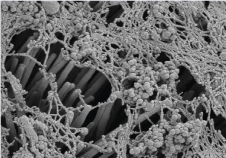 Figure 15: Scanning Electron Microscopy (SEM) image (scale 100 (nm)) of Amorphous Boron Nitride Nanotubes (a-BNNTs) as the adsorbent for eliminating carcinoma, sarcoma, lymphoma, leukemia, germ cell tumor and blastoma cancer cells and tissues in human blood.
View Figure 15
Figure 15: Scanning Electron Microscopy (SEM) image (scale 100 (nm)) of Amorphous Boron Nitride Nanotubes (a-BNNTs) as the adsorbent for eliminating carcinoma, sarcoma, lymphoma, leukemia, germ cell tumor and blastoma cancer cells and tissues in human blood.
View Figure 15
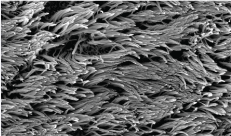 Figure 16: Scanning Electron Microscopy (SEM) image (scale 100 (nm)) of Hexagonal Boron Nitride Nanotubes (h-BNNTs) as the adsorbent for eliminating carcinoma, sarcoma, lymphoma, leukemia, germ cell tumor and blastoma cancer cells and tissues in human blood.
View Figure 16
Figure 16: Scanning Electron Microscopy (SEM) image (scale 100 (nm)) of Hexagonal Boron Nitride Nanotubes (h-BNNTs) as the adsorbent for eliminating carcinoma, sarcoma, lymphoma, leukemia, germ cell tumor and blastoma cancer cells and tissues in human blood.
View Figure 16
 Figure 17: Attenuated Total Reflectance Fourier Transform Infrared (ATR-FTIR) spectrum of Multi-Walled Carbon Nanotubes (MWCNTs) as the adsorbent for eliminating carcinoma, sarcoma, lymphoma, leukemia, germ cell tumor and blastoma cancer cells and tissues in human blood. It should be noted that y-axis shows absorbance and also x-axis shows wavenumber (cm-1).
View Figure 17
Figure 17: Attenuated Total Reflectance Fourier Transform Infrared (ATR-FTIR) spectrum of Multi-Walled Carbon Nanotubes (MWCNTs) as the adsorbent for eliminating carcinoma, sarcoma, lymphoma, leukemia, germ cell tumor and blastoma cancer cells and tissues in human blood. It should be noted that y-axis shows absorbance and also x-axis shows wavenumber (cm-1).
View Figure 17
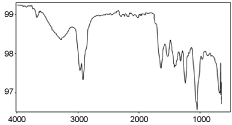 Figure 18: Attenuated Total Reflectance Fourier Transform Infrared (ATR-FTIR) spectrum of Boron Nitride Nanotubes (BNNTs) as the adsorbent for eliminating carcinoma, sarcoma, lymphoma, leukemia, germ cell tumor and blastoma cancer cells and tissues in human blood. It should be noted that y-axis shows absorbance and also x-axis shows wave number (cm-1).
View Figure 18
Figure 18: Attenuated Total Reflectance Fourier Transform Infrared (ATR-FTIR) spectrum of Boron Nitride Nanotubes (BNNTs) as the adsorbent for eliminating carcinoma, sarcoma, lymphoma, leukemia, germ cell tumor and blastoma cancer cells and tissues in human blood. It should be noted that y-axis shows absorbance and also x-axis shows wave number (cm-1).
View Figure 18
 Figure 19: Attenuated Total Reflectance Fourier Transform Infrared (ATR-FTIR) spectrum of Amorphous Boron Nitride Nanotubes (a-BNNTs) as the adsorbent for eliminating carcinoma, sarcoma, lymphoma, leukemia, germ cell tumor and blastoma cancer cells and tissues in human blood. It should be noted that y-axis shows absorbance and also x-axis shows wave number (cm-1).
View Figure 19
Figure 19: Attenuated Total Reflectance Fourier Transform Infrared (ATR-FTIR) spectrum of Amorphous Boron Nitride Nanotubes (a-BNNTs) as the adsorbent for eliminating carcinoma, sarcoma, lymphoma, leukemia, germ cell tumor and blastoma cancer cells and tissues in human blood. It should be noted that y-axis shows absorbance and also x-axis shows wave number (cm-1).
View Figure 19
 Figure 20: Attenuated Total Reflectance Fourier Transform Infrared (ATR-FTIR) spectrum of Hexagonal Boron Nitride Nanotubes (h-BNNTs) as the adsorbent for eliminating carcinoma, sarcoma, lymphoma, leukemia, germ cell tumor and blastoma cancer cells and tissues in human blood. It should be noted that y-axis shows absorbance and also x-axis shows wave number (cm-1).
View Figure 20
Figure 20: Attenuated Total Reflectance Fourier Transform Infrared (ATR-FTIR) spectrum of Hexagonal Boron Nitride Nanotubes (h-BNNTs) as the adsorbent for eliminating carcinoma, sarcoma, lymphoma, leukemia, germ cell tumor and blastoma cancer cells and tissues in human blood. It should be noted that y-axis shows absorbance and also x-axis shows wave number (cm-1).
View Figure 20
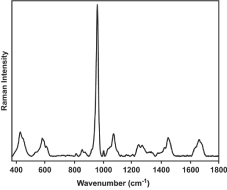 Figure 21: Raman spectrum of Multi-Walled Carbon Nanotubes (MWCNTs) as the adsorbent for eliminating carcinoma, sarcoma, lymphoma, leukemia, germ cell tumor and blastoma cancer cells and tissues in human blood. It should be noted that y-axis shows Raman intensity and also x-axis shows Raman shift (cm-1).
View Figure 21
Figure 21: Raman spectrum of Multi-Walled Carbon Nanotubes (MWCNTs) as the adsorbent for eliminating carcinoma, sarcoma, lymphoma, leukemia, germ cell tumor and blastoma cancer cells and tissues in human blood. It should be noted that y-axis shows Raman intensity and also x-axis shows Raman shift (cm-1).
View Figure 21
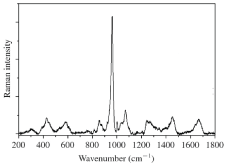 Figure 22: Raman spectrum of Boron Nitride Nanotubes (BNNTs) as the adsorbent for eliminating carcinoma, sarcoma, lymphoma, leukemia, germ cell tumor and blastoma cancer cells and tissues in human blood. It should be noted that y-axis shows Raman intensity and also x-axis shows Raman shift (cm-1).
View Figure 22
Figure 22: Raman spectrum of Boron Nitride Nanotubes (BNNTs) as the adsorbent for eliminating carcinoma, sarcoma, lymphoma, leukemia, germ cell tumor and blastoma cancer cells and tissues in human blood. It should be noted that y-axis shows Raman intensity and also x-axis shows Raman shift (cm-1).
View Figure 22
 Figure 23: Raman spectrum of Amorphous Boron Nitride Nanotubes (a-BNNTs) as the adsorbent for eliminating carcinoma, sarcoma, lymphoma, leukemia, germ cell tumor and blastoma cancer cells and tissues in human blood. It should be noted that y-axis shows Raman intensity and also x-axis shows Raman shift (cm-1).
View Figure 23
Figure 23: Raman spectrum of Amorphous Boron Nitride Nanotubes (a-BNNTs) as the adsorbent for eliminating carcinoma, sarcoma, lymphoma, leukemia, germ cell tumor and blastoma cancer cells and tissues in human blood. It should be noted that y-axis shows Raman intensity and also x-axis shows Raman shift (cm-1).
View Figure 23
 Figure 24: Raman spectrum of Hexagonal Boron Nitride Nanotubes (h-BNNTs) as the adsorbent for eliminating carcinoma, sarcoma, lymphoma, leukemia, germ cell tumor and blastoma cancer cells and tissues in human blood. It should be noted that y-axis shows Raman intensity and also x-axis shows Raman shift (cm-1).
View Figure 24
Figure 24: Raman spectrum of Hexagonal Boron Nitride Nanotubes (h-BNNTs) as the adsorbent for eliminating carcinoma, sarcoma, lymphoma, leukemia, germ cell tumor and blastoma cancer cells and tissues in human blood. It should be noted that y-axis shows Raman intensity and also x-axis shows Raman shift (cm-1).
View Figure 24
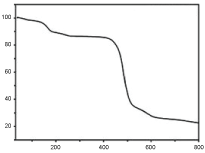 Figure 25: Differential Thermal Analysis-Thermal Gravim Analysis (DTA-TGA) of Multi-Walled Carbon Nanotubes (MWCNTs) as the adsorbent for eliminating carcinoma, sarcoma, lymphoma, leukemia, germ cell tumor and blastoma cancer cells and tissues in human blood. It should be noted that y-axis shows weight (%) and also x-axis shows temperature (℃).
View Figure 25
Figure 25: Differential Thermal Analysis-Thermal Gravim Analysis (DTA-TGA) of Multi-Walled Carbon Nanotubes (MWCNTs) as the adsorbent for eliminating carcinoma, sarcoma, lymphoma, leukemia, germ cell tumor and blastoma cancer cells and tissues in human blood. It should be noted that y-axis shows weight (%) and also x-axis shows temperature (℃).
View Figure 25
 Figure 26: Differential Thermal Analysis-Thermal Gravim Analysis (DTA-TGA) of Boron Nitride Nanotubes (BNNTs) as the adsorbent for eliminating carcinoma, sarcoma, lymphoma, leukemia, germ cell tumor and blastoma cancer cells and tissues in human blood. It should be noted that y-axis shows weight (%) and also x-axis shows temperature (℃).
View Figure 26
Figure 26: Differential Thermal Analysis-Thermal Gravim Analysis (DTA-TGA) of Boron Nitride Nanotubes (BNNTs) as the adsorbent for eliminating carcinoma, sarcoma, lymphoma, leukemia, germ cell tumor and blastoma cancer cells and tissues in human blood. It should be noted that y-axis shows weight (%) and also x-axis shows temperature (℃).
View Figure 26
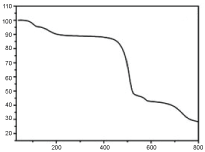 Figure 27: Differential Thermal Analysis-Thermal Gravim Analysis (DTA-TGA) of Amorphous Boron Nitride Nanotubes (a-BNNTs) as the adsorbent for eliminating carcinoma, sarcoma, lymphoma, leukemia, germ cell tumor and blastoma cancer cells and tissues in human blood. It should be noted that y-axis shows weight (%) and also x-axis shows temperature (℃).
View Figure 27
Figure 27: Differential Thermal Analysis-Thermal Gravim Analysis (DTA-TGA) of Amorphous Boron Nitride Nanotubes (a-BNNTs) as the adsorbent for eliminating carcinoma, sarcoma, lymphoma, leukemia, germ cell tumor and blastoma cancer cells and tissues in human blood. It should be noted that y-axis shows weight (%) and also x-axis shows temperature (℃).
View Figure 27
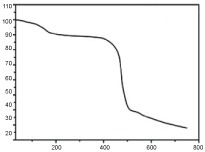 Figure 28: Differential Thermal Analysis-Thermal Gravim Analysis (DTA-TGA) of Hexagonal Boron Nitride Nanotubes (h-BNNTs) as the adsorbent for eliminating carcinoma, sarcoma, lymphoma, leukemia, germ cell tumor and blastoma cancer cells and tissues in human blood. It should be noted that y-axis shows weight (%) and also x-axis shows temperature (℃).
View Figure 28
Figure 28: Differential Thermal Analysis-Thermal Gravim Analysis (DTA-TGA) of Hexagonal Boron Nitride Nanotubes (h-BNNTs) as the adsorbent for eliminating carcinoma, sarcoma, lymphoma, leukemia, germ cell tumor and blastoma cancer cells and tissues in human blood. It should be noted that y-axis shows weight (%) and also x-axis shows temperature (℃).
View Figure 28
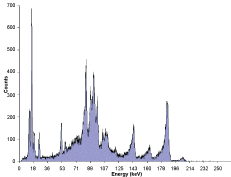 Figure 29: Energy-Dispersive X-Ray (EDX) spectrum of Multi-Walled Carbon Nanotubes (MWCNTs) as the adsorbent for eliminating carcinoma, sarcoma, lymphoma, leukemia, germ cell tumor and blastoma cancer cells and tissues in human blood. It should be noted that y-axis shows intensity (counts) and also x-axis shows energy (eV).
View Figure 29
Figure 29: Energy-Dispersive X-Ray (EDX) spectrum of Multi-Walled Carbon Nanotubes (MWCNTs) as the adsorbent for eliminating carcinoma, sarcoma, lymphoma, leukemia, germ cell tumor and blastoma cancer cells and tissues in human blood. It should be noted that y-axis shows intensity (counts) and also x-axis shows energy (eV).
View Figure 29
 Figure 30: Energy-Dispersive X-Ray (EDX) spectrum of Boron Nitride Nanotubes (BNNTs) as the adsorbent for eliminating carcinoma, sarcoma, lymphoma, leukemia, germ cell tumor and blastoma cancer cells and tissues in human blood. It should be noted that y-axis shows intensity (counts) and also x-axis shows energy (eV).
View Figure 30
Figure 30: Energy-Dispersive X-Ray (EDX) spectrum of Boron Nitride Nanotubes (BNNTs) as the adsorbent for eliminating carcinoma, sarcoma, lymphoma, leukemia, germ cell tumor and blastoma cancer cells and tissues in human blood. It should be noted that y-axis shows intensity (counts) and also x-axis shows energy (eV).
View Figure 30
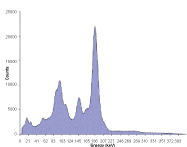 Figure 31: Energy-Dispersive X-Ray (EDX) spectrum of Amorphous Boron Nitride Nanotubes (a-BNNTs) as the adsorbent for eliminating carcinoma, sarcoma, lymphoma, leukemia, germ cell tumor and blastoma cancer cells and tissues in human blood. It should be noted that y-axis shows intensity (counts) and also x-axis shows energy (eV).
View Figure 31
Figure 31: Energy-Dispersive X-Ray (EDX) spectrum of Amorphous Boron Nitride Nanotubes (a-BNNTs) as the adsorbent for eliminating carcinoma, sarcoma, lymphoma, leukemia, germ cell tumor and blastoma cancer cells and tissues in human blood. It should be noted that y-axis shows intensity (counts) and also x-axis shows energy (eV).
View Figure 31
 Figure 32: Energy-Dispersive X-Ray (EDX) spectrum of Hexagonal Boron Nitride Nanotubes (h-BNNTs) as the adsorbent for eliminating carcinoma, sarcoma, lymphoma, leukemia, germ cell tumor and blastoma cancer cells and tissues in human blood. It should be noted that y-axis shows intensity (counts) and also x-axis shows energy (eV).
View Figure 32
Figure 32: Energy-Dispersive X-Ray (EDX) spectrum of Hexagonal Boron Nitride Nanotubes (h-BNNTs) as the adsorbent for eliminating carcinoma, sarcoma, lymphoma, leukemia, germ cell tumor and blastoma cancer cells and tissues in human blood. It should be noted that y-axis shows intensity (counts) and also x-axis shows energy (eV).
View Figure 32
A stock solution of Hydron, Transhumanism, H (S-train), Humanity+ (Humanity Plus), electron hole and Evolved High Speed Packet Access (or HSPA+ or HSPA (Plus) or HSPAP) was prepared by adding specific amounts of Cadmium Oxide (CdO) nanoparticles to deionized human blood cancer cells and tissues. Next, drinking blood standards as well as human blood cancer cells and tissues standards for discharge into surface human blood cancer cells and tissues were considered during preparation of samples at concentrations of 0.05, 0.1, 0.15, and 0.2 mg/L using the synthesized mother solution. The experiments were conducted at different adsorption times and pHs.
Following measurement of the initial levels of Hydron, Transhumanism, H (S-train), Humanity+ (Humanity Plus), electron hole and Evolved High Speed Packet Access (or HSPA+ or HSPA (Plus) or HSPAP) in the human blood cancer cells and tissues, the Multi-Walled Carbon Nanotubes (MWCNTs), Boron Nitride Nanotubes (BNNTs), Amorphous Boron Nitride Nanotubes (a-BNNTs) and Hexagonal Boron Nitride Nanotubes (h-BNNTs) were brought into contact with the samples for 60, 120, 180, and 240 (min) for the initial concentrations of Hydron, Transhumanism, H (S-train), Humanity+ (Humanity Plus), electron hole and Evolved High Speed Packet Access (or HSPA+ or HSPA (Plus) or HSPAP) (0.05, 0.1, 0.15, and 0.2 mg/L), pH (3, 6, 9 and 12) and adsorbent mass (0.05, 0.1, 0.15, and 0.2 ppm of sample). After completion of specific contact times between adsorbent and sample, the human blood cancer cells and tissues from the synchrotronic reactor was sampled. After separation of the adsorbent values, the concentration of Hydron, Transhumanism, H (S-train), Humanity+ (Humanity Plus), electron hole and Evolved High Speed Packet Access (or HSPA+ or HSPA (Plus) or HSPAP) was measured using Cadmium Oxide (CdO) nanoparticles according to the standard methods at a wavelength of 590 (nm) using a spectrophotometric device. The efficiency of the method was calculated as:
where C0 and Ct denote the initial and final concentrations of Hydron, Transhumanism, H (S-train), Humanity+ (Humanity Plus), electron hole and Evolved High Speed Packet Access (or HSPA+ or HSPA (Plus) or HSPAP) in human blood cancer cells and tissues (mg/L), respectively and RE denotes removal efficiency percentage.
The experimental results were evaluated using pseudo-first-order and pseudo-second-order kinetic models. The adsorption equilibrium conditions were determined by considering pH, adsorbent concentration and concentration of adsorbate, contact time and temperature. The isotherm of equilibrium adsorption was examined using the Langmuir, Freundlich and Tamkin models of Multi-Walled Carbon Nanotubes (MWCNTs), Boron Nitride Nanotubes (BNNTs), Amorphous Boron Nitride Nanotubes (a-BNNTs) and Hexagonal Boron Nitride Nanotubes (h-BNNTs) (Figure 33).
 Figure 33: Isotherm models for adsorption: (a) Langmuir, (b) Freundlich and (c) Tamkin of Multi-Walled Carbon Nanotubes (MWCNTs) (black points), Boron Nitride Nanotubes (BNNTs) (red points), Amorphous Boron Nitride Nanotubes (a-BNNTs) (green points) and Hexagonal Boron Nitride Nanotubes (h-BNNTs) (blue points). It should be noted that y-axis shows qe (mg/g) and also x-axis shows Ce (mg/L).
View Figure 33
Figure 33: Isotherm models for adsorption: (a) Langmuir, (b) Freundlich and (c) Tamkin of Multi-Walled Carbon Nanotubes (MWCNTs) (black points), Boron Nitride Nanotubes (BNNTs) (red points), Amorphous Boron Nitride Nanotubes (a-BNNTs) (green points) and Hexagonal Boron Nitride Nanotubes (h-BNNTs) (blue points). It should be noted that y-axis shows qe (mg/g) and also x-axis shows Ce (mg/L).
View Figure 33
The pH of an adsorbent solution plays an important role in the process and capacity of adsorption. It affects the superficial charge of the adsorbent and influences the degree of ionization of the toxic compounds in human blood cancer cells and tissues, separation of functional groups onto the adsorption sites and the chemistry of the human blood cancer cells and tissues. The effect of pH on the adsorption of Hydron, Transhumanism, H (S-train), Humanity+ (Humanity Plus), electron hole and Evolved High Speed Packet Access (or HSPA+ or HSPA (Plus) or HSPAP) (0.05 mg/L of Hydron, Transhumanism, H (S-train), Humanity+ (Humanity Plus), electron hole and Evolved High Speed Packet Access (or HSPA+ or HSPA (Plus) or HSPAP) and 0.0001 mg/L of Multi-Walled Carbon Nanotubes (MWCNTs), Boron Nitride Nanotubes (BNNTs), Amorphous Boron Nitride Nanotubes (a-BNNTs) and Hexagonal Boron Nitride Nanotubes (h-BNNTs) for eliminating carcinoma, sarcoma, lymphoma, leukemia, germ cell tumor and blastoma cancer cells and tissues from human blood after 240 (min) at pH values of 3, 6, 9 and 12 are shown in Figure 34, Figure 35, Figure 36 and Figure 37. As shown, an increase in the pH of the solution from 3 to 6 increased Hydron, Transhumanism, H (S-train), Humanity+ (Humanity Plus), electron hole and Evolved High Speed Packet Access (or HSPA+ or HSPA (Plus) or HSPAP) removal efficiency, but a further increase from 6 to 12, decreased efficiency.
 Figure 34: Effect of pH on adsorption of Hydron, Transhumanism, H (S-train), Humanity+ (Humanity Plus), electron hole and Evolved High Speed Packet Access (or HSPA+ or HSPA (Plus) or HSPAP) by Multi-Walled Carbon Nanotubes (MWCNTs) for 240 (min), 25 ℃, initial Hydron, Transhumanism, H (S-train), Humanity+ (Humanity Plus), electron hole and Evolved High Speed Packet Access (or HSPA+ or HSPA (Plus) or HSPAP) concentration of 0.0001 mg/L and 0.05 mg/L of adsorbent.
View Figure 34
Figure 34: Effect of pH on adsorption of Hydron, Transhumanism, H (S-train), Humanity+ (Humanity Plus), electron hole and Evolved High Speed Packet Access (or HSPA+ or HSPA (Plus) or HSPAP) by Multi-Walled Carbon Nanotubes (MWCNTs) for 240 (min), 25 ℃, initial Hydron, Transhumanism, H (S-train), Humanity+ (Humanity Plus), electron hole and Evolved High Speed Packet Access (or HSPA+ or HSPA (Plus) or HSPAP) concentration of 0.0001 mg/L and 0.05 mg/L of adsorbent.
View Figure 34
 Figure 35: Effect of pH on adsorption of Hydron, Transhumanism, H (S-train), Humanity+ (Humanity Plus), electron hole and Evolved High Speed Packet Access (or HSPA+ or HSPA (Plus) or HSPAP) by Boron Nitride Nanotubes (BNNTs) for 240 (min), 25 ℃, initial Hydron, Transhumanism, H (S-train), Humanity+ (Humanity Plus), electron hole and Evolved High Speed Packet Access (or HSPA+ or HSPA (Plus) or HSPAP) concentration of 0.0001 mg/L and 0.05 mg/L of adsorbent.
View Figure 35
Figure 35: Effect of pH on adsorption of Hydron, Transhumanism, H (S-train), Humanity+ (Humanity Plus), electron hole and Evolved High Speed Packet Access (or HSPA+ or HSPA (Plus) or HSPAP) by Boron Nitride Nanotubes (BNNTs) for 240 (min), 25 ℃, initial Hydron, Transhumanism, H (S-train), Humanity+ (Humanity Plus), electron hole and Evolved High Speed Packet Access (or HSPA+ or HSPA (Plus) or HSPAP) concentration of 0.0001 mg/L and 0.05 mg/L of adsorbent.
View Figure 35
 Figure 36: Effect of pH on adsorption of Hydron, Transhumanism, H (S-train), Humanity+ (Humanity Plus), electron hole and Evolved High Speed Packet Access (or HSPA+ or HSPA (Plus) or HSPAP) by Amorphous Boron Nitride Nanotubes (a-BNNTs) for 240 (min), 25 ℃, initial Hydron, Transhumanism, H (S-train), Humanity+ (Humanity Plus), electron hole and Evolved High Speed Packet Access (or HSPA+ or HSPA (Plus) or HSPAP) concentration of 0.0001 mg/L and 0.05 mg/L of adsorbent.
View Figure 36
Figure 36: Effect of pH on adsorption of Hydron, Transhumanism, H (S-train), Humanity+ (Humanity Plus), electron hole and Evolved High Speed Packet Access (or HSPA+ or HSPA (Plus) or HSPAP) by Amorphous Boron Nitride Nanotubes (a-BNNTs) for 240 (min), 25 ℃, initial Hydron, Transhumanism, H (S-train), Humanity+ (Humanity Plus), electron hole and Evolved High Speed Packet Access (or HSPA+ or HSPA (Plus) or HSPAP) concentration of 0.0001 mg/L and 0.05 mg/L of adsorbent.
View Figure 36
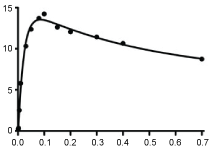 Figure 37: Effect of pH on adsorption of Hydron, Transhumanism, H (S-train), Humanity+ (Humanity Plus), electron hole and Evolved High Speed Packet Access (or HSPA+ or HSPA (Plus) or HSPAP) by Hexagonal Boron Nitride Nanotubes (h-BNNTs) for 240 (min), 25 ℃, initial Hydron, Transhumanism, H (S-train), Humanity+ (Humanity Plus), electron hole and Evolved High Speed Packet Access (or HSPA+ or HSPA (Plus) or HSPAP) concentration of 0.0001 mg/L and 0.05 mg/L of adsorbent.
View Figure 37
Figure 37: Effect of pH on adsorption of Hydron, Transhumanism, H (S-train), Humanity+ (Humanity Plus), electron hole and Evolved High Speed Packet Access (or HSPA+ or HSPA (Plus) or HSPAP) by Hexagonal Boron Nitride Nanotubes (h-BNNTs) for 240 (min), 25 ℃, initial Hydron, Transhumanism, H (S-train), Humanity+ (Humanity Plus), electron hole and Evolved High Speed Packet Access (or HSPA+ or HSPA (Plus) or HSPAP) concentration of 0.0001 mg/L and 0.05 mg/L of adsorbent.
View Figure 37
The effect of the amount of adsorbent (0.05, 0.1, 0.15, and 0.2 mg/L) on Hydron, Transhumanism, H (S-train), Humanity+ (Humanity Plus), electron hole and Evolved High Speed Packet Access (or HSPA+ or HSPA (Plus) or HSPAP) removal efficiency by Multi-Walled Carbon Nanotubes (MWCNTs), Boron Nitride Nanotubes (BNNTs), Amorphous Boron Nitride Nanotubes (a-BNNTs) and Hexagonal Boron Nitride Nanotubes (h-BNNTs) for eliminating carcinoma, sarcoma, lymphoma, leukemia, germ cell tumor and blastoma cancer cells and tissues from human blood was investigated in a human blood solution of 0.0001 mg/L of Hydron, Transhumanism, H (S-train), Humanity+ (Humanity Plus), electron hole and Evolved High Speed Packet Access (or HSPA+ or HSPA (Plus) or HSPAP) at a pH of 6. The results are shown in Figure 38, Figure 39, Figure 40 and Figure 41. As shown, an increase in absorbent adsorbent dose from 0.05 to 0.2 increased removal of Hydron, Transhumanism, H (S-train), Humanity+ (Humanity Plus), electron hole and Evolved High Speed Packet Access (or HSPA+ or HSPA (Plus) or HSPAP) from 0.81% to 0.84%.
 Figure 38: Effect of adsorbent dose on removal of inorganic Hydron, Transhumanism, H (S-train), Humanity+ (Humanity Plus), electron hole and Evolved High Speed Packet Access (or HSPA+ or HSPA (Plus) or HSPAP) using Multi-Walled Carbon Nanotubes (MWCNTs) at 240 (min), pH = 6 and 25 ℃ for 0.0001 mg/L of Hydron, Transhumanism, H (S-train), Humanity+ (Humanity Plus), electron hole and Evolved High Speed Packet Access (or HSPA+ or HSPA (Plus) or HSPAP).
View Figure 38
Figure 38: Effect of adsorbent dose on removal of inorganic Hydron, Transhumanism, H (S-train), Humanity+ (Humanity Plus), electron hole and Evolved High Speed Packet Access (or HSPA+ or HSPA (Plus) or HSPAP) using Multi-Walled Carbon Nanotubes (MWCNTs) at 240 (min), pH = 6 and 25 ℃ for 0.0001 mg/L of Hydron, Transhumanism, H (S-train), Humanity+ (Humanity Plus), electron hole and Evolved High Speed Packet Access (or HSPA+ or HSPA (Plus) or HSPAP).
View Figure 38
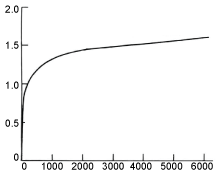 Figure 39: Effect of adsorbent dose on removal of inorganic Hydron, Transhumanism, H (S-train), Humanity+ (Humanity Plus), electron hole and Evolved High Speed Packet Access (or HSPA+ or HSPA (Plus) or HSPAP) using Boron Nitride Nanotubes (BNNTs) at 240 (min), pH = 6 and 25 ℃ for 0.0001 mg/L of Hydron, Transhumanism, H (S-train), Humanity+ (Humanity Plus), electron hole and Evolved High Speed Packet Access (or HSPA+ or HSPA (Plus) or HSPAP).
View Figure 39
Figure 39: Effect of adsorbent dose on removal of inorganic Hydron, Transhumanism, H (S-train), Humanity+ (Humanity Plus), electron hole and Evolved High Speed Packet Access (or HSPA+ or HSPA (Plus) or HSPAP) using Boron Nitride Nanotubes (BNNTs) at 240 (min), pH = 6 and 25 ℃ for 0.0001 mg/L of Hydron, Transhumanism, H (S-train), Humanity+ (Humanity Plus), electron hole and Evolved High Speed Packet Access (or HSPA+ or HSPA (Plus) or HSPAP).
View Figure 39
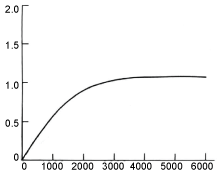 Figure 40: Effect of adsorbent dose on removal of inorganic Hydron, Transhumanism, H (S-train), Humanity+ (Humanity Plus), electron hole and Evolved High Speed Packet Access (or HSPA+ or HSPA (Plus) or HSPAP) using Amorphous Boron Nitride Nanotubes (a-BNNTs) at 240 (min), pH = 6 and 25 ℃ for 0.0001 mg/L of Hydron, Transhumanism, H (S-train), Humanity+ (Humanity Plus), electron hole and Evolved High Speed Packet Access (or HSPA+ or HSPA (Plus) or HSPAP).
View Figure 40
Figure 40: Effect of adsorbent dose on removal of inorganic Hydron, Transhumanism, H (S-train), Humanity+ (Humanity Plus), electron hole and Evolved High Speed Packet Access (or HSPA+ or HSPA (Plus) or HSPAP) using Amorphous Boron Nitride Nanotubes (a-BNNTs) at 240 (min), pH = 6 and 25 ℃ for 0.0001 mg/L of Hydron, Transhumanism, H (S-train), Humanity+ (Humanity Plus), electron hole and Evolved High Speed Packet Access (or HSPA+ or HSPA (Plus) or HSPAP).
View Figure 40
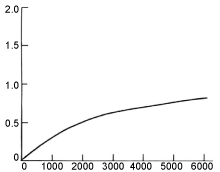 Figure 41: Effect of adsorbent dose on removal of inorganic Hydron, Transhumanism, H (S-train), Humanity+ (Humanity Plus), electron hole and Evolved High Speed Packet Access (or HSPA+ or HSPA (Plus) or HSPAP) using Hexagonal Boron Nitride Nanotubes (h-BNNTs) at 240 (min), pH = 6 and 25 ℃ for 0.0001 mg/L of Hydron, Transhumanism, H (S-train), Humanity+ (Humanity Plus), electron hole and Evolved High Speed Packet Access (or HSPA+ or HSPA (Plus) or HSPAP).
View Figure 41
Figure 41: Effect of adsorbent dose on removal of inorganic Hydron, Transhumanism, H (S-train), Humanity+ (Humanity Plus), electron hole and Evolved High Speed Packet Access (or HSPA+ or HSPA (Plus) or HSPAP) using Hexagonal Boron Nitride Nanotubes (h-BNNTs) at 240 (min), pH = 6 and 25 ℃ for 0.0001 mg/L of Hydron, Transhumanism, H (S-train), Humanity+ (Humanity Plus), electron hole and Evolved High Speed Packet Access (or HSPA+ or HSPA (Plus) or HSPAP).
View Figure 41
The effect of the initial concentration of Hydron, Transhumanism, H (S-train), Humanity+ (Humanity Plus), electron hole and Evolved High Speed Packet Access (or HSPA+ or HSPA (Plus) or HSPAP) (0.05, 0.1, 0.15 and 0.2 mg/L) on Hydron, Transhumanism, H (S-train), Humanity+ (Humanity Plus), electron hole and Evolved High Speed Packet Access (or HSPA+ or HSPA (Plus) or HSPAP) removal efficiency at pH = 6 for different contact times is shown in Figure 42, Figure 43, Figure 44 and Figure 45. As shown, an increase in the initial concentration of Hydron, Transhumanism, H (S-train), Humanity+ (Humanity Plus), electron hole and Evolved High Speed Packet Access (or HSPA+ or HSPA (Plus) or HSPAP) from 0.05 to 0.2 mg/L increased removal efficiency from 0.54% to 0.91%.
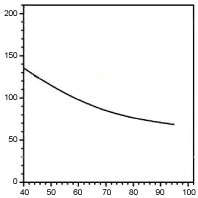 Figure 42: Effect of initial concentration of Hydron, Transhumanism, H (S-train), Humanity+ (Humanity Plus), electron hole and Evolved High Speed Packet Access (or HSPA+ or HSPA (Plus) or HSPAP) on adsorption by Multi-Walled Carbon Nanotubes (MWCNTs) at 240 (min), pH = 6 and 25 ℃ for 0.0001 mg/L of adsorbent.
View Figure 42
Figure 42: Effect of initial concentration of Hydron, Transhumanism, H (S-train), Humanity+ (Humanity Plus), electron hole and Evolved High Speed Packet Access (or HSPA+ or HSPA (Plus) or HSPAP) on adsorption by Multi-Walled Carbon Nanotubes (MWCNTs) at 240 (min), pH = 6 and 25 ℃ for 0.0001 mg/L of adsorbent.
View Figure 42
 Figure 43: Effect of initial concentration of Hydron, Transhumanism, H (S-train), Humanity+ (Humanity Plus), electron hole and Evolved High Speed Packet Access (or HSPA+ or HSPA (Plus) or HSPAP) on adsorption by Boron Nitride Nanotubes (BNNTs) at 240 (min), pH = 6 and 25 ℃ for 0.0001 mg/L of adsorbent.
View Figure 43
Figure 43: Effect of initial concentration of Hydron, Transhumanism, H (S-train), Humanity+ (Humanity Plus), electron hole and Evolved High Speed Packet Access (or HSPA+ or HSPA (Plus) or HSPAP) on adsorption by Boron Nitride Nanotubes (BNNTs) at 240 (min), pH = 6 and 25 ℃ for 0.0001 mg/L of adsorbent.
View Figure 43
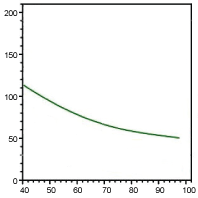 Figure 44: Effect of initial concentration of Hydron, Transhumanism, H (S-train), Humanity+ (Humanity Plus), electron hole and Evolved High Speed Packet Access (or HSPA+ or HSPA (Plus) or HSPAP) on adsorption by Amorphous Boron Nitride Nanotubes (a-BNNTs) at 240 (min), pH = 6 and 25 ℃ for 0.0001 mg/L of adsorbent.
View Figure 44
Figure 44: Effect of initial concentration of Hydron, Transhumanism, H (S-train), Humanity+ (Humanity Plus), electron hole and Evolved High Speed Packet Access (or HSPA+ or HSPA (Plus) or HSPAP) on adsorption by Amorphous Boron Nitride Nanotubes (a-BNNTs) at 240 (min), pH = 6 and 25 ℃ for 0.0001 mg/L of adsorbent.
View Figure 44
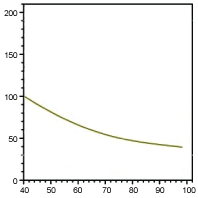 Figure 45: Effect of initial concentration of Hydron, Transhumanism, H (S-train), Humanity+ (Humanity Plus), electron hole and Evolved High Speed Packet Access (or HSPA+ or HSPA (Plus) or HSPAP) on adsorption by Hexagonal Boron Nitride Nanotubes (h-BNNTs) at 240 (min), pH = 6 and 25 ℃ for 0.0001 mg/L of adsorbent.
View Figure 45
Figure 45: Effect of initial concentration of Hydron, Transhumanism, H (S-train), Humanity+ (Humanity Plus), electron hole and Evolved High Speed Packet Access (or HSPA+ or HSPA (Plus) or HSPAP) on adsorption by Hexagonal Boron Nitride Nanotubes (h-BNNTs) at 240 (min), pH = 6 and 25 ℃ for 0.0001 mg/L of adsorbent.
View Figure 45
It is essential to determine the factors affecting the reaction rate and mechanisms controlling adsorption, including adsorption at the surface, chemical reaction and diffusion mechanisms through kinetic evaluation. Pseudo-first-order and pseudo-second-order kinetic models are widely used to characterize adsorption. A pseudo-first-order kinetic model indicates that diffusion takes place from inside a layer and is based on solid capacity. A pseudo-second-order kinetic model indicates that chemical adsorption slows the rate and controls adsorption, which is based on solid phase adsorption. The linear form of the pseudo-first-order kinetic model is expressed by following Eq. (2):
Where qe is denotes the equilibrium adsorption Hydron, Transhumanism, H (S-train), Humanity+ (Humanity Plus), electron hole and Evolved High Speed Packet Access (or HSPA+ or HSPA (Plus) or HSPAP) onto the by Multi-Walled Carbon Nanotubes (MWCNTs), Boron Nitride Nanotubes (BNNTs), Amorphous Boron Nitride Nanotubes (a-BNNTs) and Hexagonal Boron Nitride Nanotubes (h-BNNTs) (mg.g-1), qt denotes the amount of adsorption Hydron, Transhumanism, H (S-train), Humanity+ (Humanity Plus), electron hole and Evolved High Speed Packet Access (or HSPA+ or HSPA (Plus) or HSPAP) adsorbed at time (t) (mg.g-1) and k1 denotes the equilibrium constant of the first-order kinetic rate (min-1). The linear form of the pseudo-second-order kinetic model is:
Where qe represents the equilibrium adsorption Hydron, Transhumanism, H (S-train), Humanity+ (Humanity Plus), electron hole and Evolved High Speed Packet Access (or HSPA+ or HSPA (Plus) or HSPAP) (mg.g-1), qt denotes the adsorption capacity Hydron, Transhumanism, H (S-train), Humanity+ (Humanity Plus), electron hole and Evolved High Speed Packet Access (or HSPA+ or HSPA (Plus) or HSPAP) at time t (mg.g-1) and k2 denotes the equilibrium constant of the first-order kinetic rate (g.mg-1.min-1).
Table 1 shows the values for qe, K1, K2 and R2 (correlation coefficient) at different Hydron, Transhumanism, H (S-train), Humanity+ (Humanity Plus), electron hole and Evolved High Speed Packet Access (or HSPA+ or HSPA (Plus) or HSPAP) concentrations (0.05 - 0.2 mg/L). Comparison of the correlation coefficients of these equations shows that the degree of adherence at adsorption equilibrium to the pseudo-second-order kinetics is greatest.
Table 1: Pseudo-first-order and pseudo-second-order kinetic models at pH = 6, T = 25 ℃ for 0.0001 mg/L of adsorbent which show the values for qe, K1, K2 and R2 (correlation coefficient) at different Hydron, Transhumanism, H (S-train), Humanity+ (Humanity Plus), electron hole and Evolved High Speed Packet Access (or HSPA+ or HSPA (Plus) or HSPAP) concentrations (0.05 - 0.2 mg/L). View Table 1
Adsorption isotherms were used to describe how the contaminants react with adsorbents. Isotherms define the relationship among the Hydron, Transhumanism, H (S-train), Humanity+ (Humanity Plus), electron hole and Evolved High Speed Packet Access (or HSPA+ or HSPA (Plus) or HSPAP) adsorbed at a constant temperature with the adsorbent mass at equilibrium. The Langmuir, Freundlich and Tamkin models were used to determine the mechanism, superficial characteristics and adsorption tendency of experimental data at equilibrium. In the Langmuir model, adsorption takes place at a series of sites inside the adsorbent. The linear form of this equation is:
Where qe denotes the amount of Hydron, Transhumanism, H (S-train), Humanity+ (Humanity Plus), electron hole and Evolved High Speed Packet Access (or HSPA+ or HSPA (Plus) or HSPAP) adsorbed onto the Multi-Walled Carbon Nanotubes (MWCNTs), Boron Nitride Nanotubes (BNNTs), Amorphous Boron Nitride Nanotubes (a-BNNTs) and Hexagonal Boron Nitride Nanotubes (h-BNNTs)mg/g, Ce denotes the final equilibrium concentration of the solution (mg/l), KL denotes the equilibrium constant Langmuir and Q0 denotes the maximum adsorption capacity at monolayer coverage (mg/L). The main characteristic of the Langmuir isotherm is the curved shape of the isotherm, a dimensionless constant called the equilibrium parameter (RL) which it can be represented by the following Eq. (5):
Where KL is the Langmuir constant (L/mg), C0 is the initial concentration of Hydron, Transhumanism, H (S-train), Humanity+ (Humanity Plus), electron hole and Evolved High Speed Packet Access (or HSPA+ or HSPA (Plus) or HSPAP) and RL is the value indicate the type of isotherm; RL = 0 is irreversible, 0 < RL < 1 is favorable, and 1 < RL is unfavorable.
In the Freundlich (1906) isotherm, adsorption occurs in response to the heterogeneous surface having a non-uniform distribution of adsorption heat on the surface. It can be liner expressed as follows:
Where KF is the adsorption capacity at unit concentration and 1/n is the intensity of adsorption and indicates the type of isotherm; 1/n = 0 is irreversible, 0 < 1/n < 1 is desirable and 1/n > 0 is undesirable.
The Tamkin isotherm assumes that the adsorption heat of all nanomolecules in a layer declines linearly due to the interaction between the adsorbent and the adsorbate. This model describes the interaction between the adsorbent and adsorbate and is expressed as:
Where B1= RT/b, KT is the adsorption capacity at unit concentration and Ce is the concentration of the solution at equilibrium.
The isotherm constants and correlation coefficients of adsorption of Hydron, Transhumanism, H (S-train), Humanity+ (Humanity Plus), electron hole and Evolved High Speed Packet Access (or HSPA+ or HSPA (Plus) or HSPAP) by Multi-Walled Carbon Nanotubes (MWCNTs), Boron Nitride Nanotubes (BNNTs), Amorphous Boron Nitride Nanotubes (a-BNNTs) and Hexagonal Boron Nitride Nanotubes (h-BNNTs) are shown in Table 2, Table 3, Table 4 and Table 5. The results indicate that the adsorption of Hydron, Transhumanism, H (S-train), Humanity+ (Humanity Plus), electron hole and Evolved High Speed Packet Access (or HSPA+ or HSPA (Plus) or HSPAP) onto the adsorbent follows the Langmuir model.
Table 2: Isotherm constants for adsorption by Multi-Walled Carbon Nanotubes (MWCNTs) (pH = 6, 240 (min), T = 25 ℃, 0.0001 mg/L of adsorbent). View Table 2
Table 3: Isotherm constants for adsorption by Boron Nitride Nanotubes (BNNTs) (pH = 6, 240 (min), T = 25 ℃, 0.0001 mg/L of adsorbent). View Table 3
Table 4: Isotherm constants for adsorption by Amorphous Boron Nitride Nanotubes (a-BNNTs) (pH = 6, 240 (min), T = 25 ℃, 0.0001 mg/L of adsorbent). View Table 4
Table 5: Isotherm constants for adsorption by Hexagonal Boron Nitride Nanotubes (h-BNNTs) (pH = 6, 240 (min), T = 25 ℃, 0.0001 mg/L of adsorbent). View Table 5
The results of initial pH of the solution showed that Hydron, Transhumanism, H (S-train), Humanity+ (Humanity Plus), electron hole and Evolved High Speed Packet Access (or HSPA+ or HSPA (Plus) or HSPAP) removal efficiency by Multi-Walled Carbon Nanotubes (MWCNTs), Boron Nitride Nanotubes (BNNTs), Amorphous Boron Nitride Nanotubes (a-BNNTs) and Hexagonal Boron Nitride Nanotubes (h-BNNTs) for eliminating carcinoma, sarcoma, lymphoma, leukemia, germ cell tumor and blastoma cancer cells and tissues from human blood was affected by pH of the solution. Also, results show that an increase in pH from 3 to 6 increased removal efficiency, but a further increase from 6 to 9 decreased removal efficiency. The reason for the reduction in removal efficiency at acidic pH values is that, in acidic environments, Hydron, Transhumanism, H (S-train), Humanity+ (Humanity Plus), electron hole and Evolved High Speed Packet Access (or HSPA+ or HSPA (Plus) or HSPAP) are the predominant species of H+. These two species are nearly neutral and do not compete with H+ ions for adsorption. In alkaline environments, hydroxyl ions predominate and compete with Hydron, Transhumanism, H (S-train), Humanity+ (Humanity Plus), electron hole and Evolved High Speed Packet Access (or HSPA+ or HSPA (Plus) or HSPAP) for adsorption. These results are congruent with those obtained by Heidari, et al. [21-153].
The effect of adsorbent mass and determination of optimal mass of the adsorbent should be taken into consideration. The results indicate that an increase in adsorbent mass increases the percentage of adsorption Hydron, Transhumanism, H (S-train), Humanity+ (Humanity Plus), electron hole and Evolved High Speed Packet Access (or HSPA+ or HSPA (Plus) or HSPAP). This results in a decrease in the number of available adsorption sites at a constant level of contaminant concentration.
To investigate the effect of the initial concentration of Hydron, Transhumanism, H (S-train), Humanity+ (Humanity Plus), electron hole and Evolved High Speed Packet Access (or HSPA+ or HSPA (Plus) or HSPAP) on removal efficiency, Hydron, Transhumanism, H (S-train), Humanity+ (Humanity Plus), electron hole and Evolved High Speed Packet Access (or HSPA+ or HSPA (Plus) or HSPAP) concentration was varied from 0.05 to 0.2 mg/L. Furthermore, obtained results show that an increase in the initial concentration of Hydron, Transhumanism, H (S-train), Humanity+ (Humanity Plus), electron hole and Evolved High Speed Packet Access (or HSPA+ or HSPA (Plus) or HSPAP) decreased the removal efficiency of Hydron, Transhumanism, H (S-train), Humanity+ (Humanity Plus), electron hole and Evolved High Speed Packet Access (or HSPA+ or HSPA (Plus) or HSPAP). This can be attributed to the decrease in available adsorption sites at saturation. Heidari, et al. found that an increase in Multi-Walled Carbon Nanotubes (MWCNTs), Boron Nitride Nanotubes (BNNTs), Amorphous Boron Nitride Nanotubes (a-BNNTs) and Hexagonal Boron Nitride Nanotubes (h-BNNTs) modified with Cadmium Oxide (CdO) increased Hydron, Transhumanism, H (S-train), Humanity+ (Humanity Plus), electron hole and Evolved High Speed Packet Access (or HSPA+ or HSPA (Plus) or HSPAP) decreased the removal efficiency of Hydron, Transhumanism, H (S-train), Humanity+ (Humanity Plus), electron hole and Evolved High Speed Packet Access (or HSPA+ or HSPA (Plus) or HSPAP) adsorption [21-153]. In addition, Heidari, et al. found that an increase in Hydron, Transhumanism, H (S-train), Humanity+ (Humanity Plus), electron hole and Evolved High Speed Packet Access (or HSPA+ or HSPA (Plus) or HSPAP) decreased the removal efficiency of Hydron, Transhumanism, H (S-train), Humanity+ (Humanity Plus), electron hole and Evolved High Speed Packet Access (or HSPA+ or HSPA (Plus) or HSPAP) concentration on hydrotalkite modified with Cadmium Oxide (CdO) decreased Hydron, Transhumanism, H (S-train), Humanity+ (Humanity Plus), electron hole and Evolved High Speed Packet Access (or HSPA+ or HSPA (Plus) or HSPAP) removal efficiency [21-153].
Adsorption isotherms are mathematical relations used to describe the way of adsorbate reacts with the adsorbent to optimize equilibrium of adsorbent to be used. The adsorption isotherms in this study showed that Hydron, Transhumanism, H (S-train), Humanity+ (Humanity Plus), electron hole and Evolved High Speed Packet Access (or HSPA+ or HSPA (Plus) or HSPAP) adsorption onto Multi-Walled Carbon Nanotubes (MWCNTs), Boron Nitride Nanotubes (BNNTs), Amorphous Boron Nitride Nanotubes (a-BNNTs) and Hexagonal Boron Nitride Nanotubes (h-BNNTs) for eliminating carcinoma, sarcoma, lymphoma, leukemia, germ cell tumor and blastoma cancer cells and tissues from human blood was best described by the Langmuir model. This appears to result from the uniform distribution or single layer of active sites on the adsorbent. The results obtained from the reaction kinetics indicated that the adsorption is best described by pseudo-second order kinetics. The correlation coefficient in the pseudo-second order model was greater than for the pseudo-first order model. In addition, the value of qe calculated by pseudo-second order kinetics is more similar to the results of the experimental data. It can be concluded and stated that the adsorption kinetics also depend on both the amount of adsorbent and the concentration of the adsorbate.